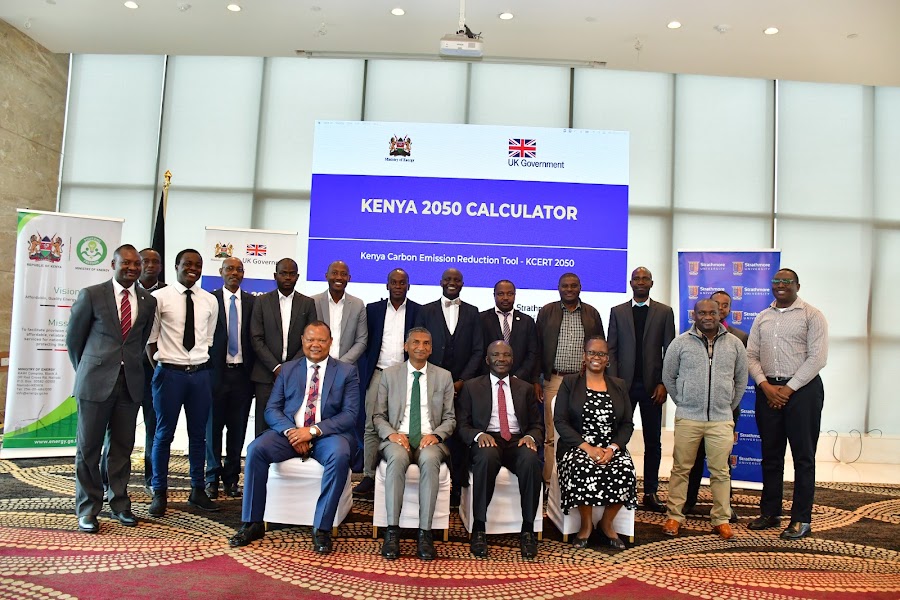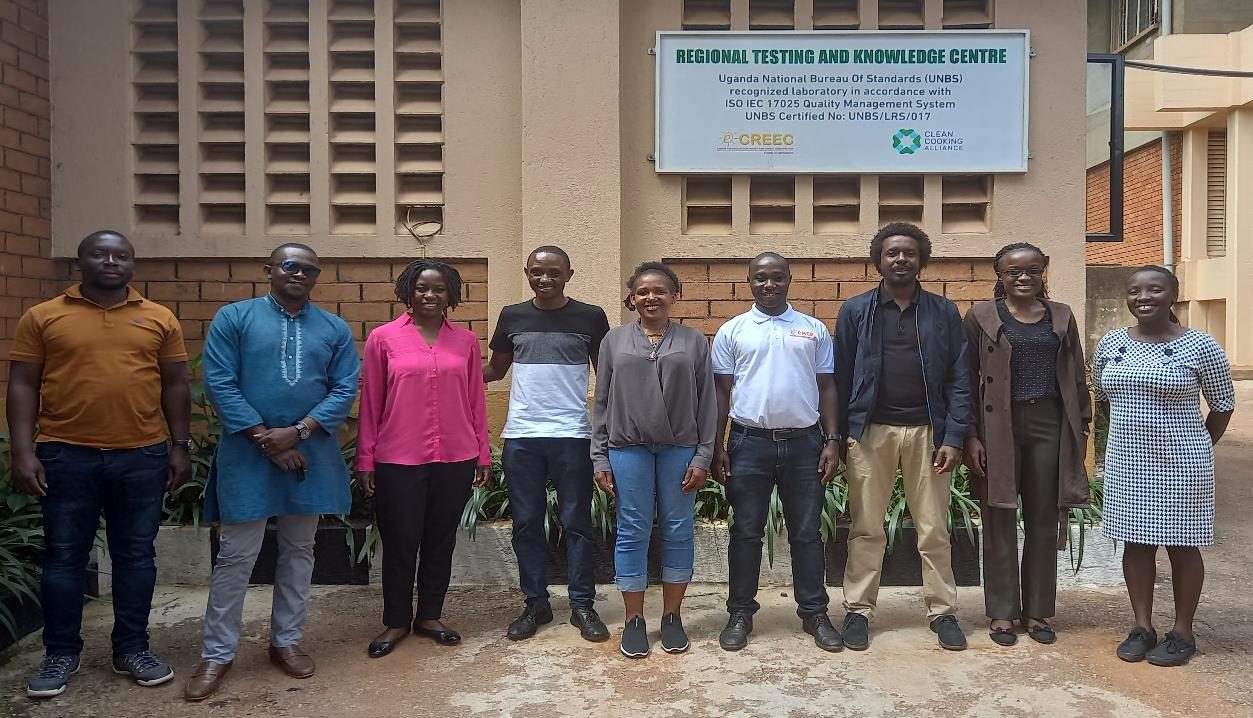
Kenya’s Ministry of Energy, the British High Commission Nairobi, and Strathmore University have jointly launched the Kenya Carbon Emission Reduction Tool (KCERT 2050), a bespoke energy and emissions model to assist Kenya in achieving its climate goals.
The interactive energy model – the first in East Africa – was delivered under the UK Government’s international 2050 Calculator programme, which is funded by the UK’s International Climate Finance, and led by global engineering, management and development consultancy Mott MacDonald, and a consortium which includes Imperial College London, Climact and Ricardo.
KCERT 2050 allows users to trial options for reducing climate change-inducing carbon emissions at a faster rate and to build a pathway that meets long-term emission targets to 2050 and beyond. It can be used to support policy-making to allow governments to increase national action on climate change and strengthen ambition in line with the 2015 Paris Agreement.
KCERT 2050 will play a key role in helping policy-makers, energy producers and consumers, including the public, in Kenya to understand the energy and emissions related choices they are making. It also provides a platform for engaging in dialogues on the challenges and opportunities of the future energy system and the responses to climate change. The project gives Kenya the opportunity to pioneer climate mitigation approaches across the East African region.
H.E Jane Marriott British High Commissioner to Kenya said: “As part of strengthening our UK-Kenya Strategic Partnership on climate action, the British High Commission welcomes the launch of the Kenya Carbon Emissions Reduction Tool 2050. This tool, which is a first in East Africa, will support government departments in Kenya to design and deliver evidence based, inclusive policies on emissions reductions, energy access, and matching energy supply and demand. I look forward to Kenya acting as a pioneer in championing the use of this innovative tool that will provide options for implementing Kenya’s emission reduction strategies and achieving net-zero development pathways by 2050.”
In his remarks, the Principal Secretary Ministry of Energy, Maj. Gen (Rtd). Dr. Gordon Kihalangwa noted that the, “Energy is about security, about development, but if we use it badly it will affect us negatively. Kenya has complied with the Paris Agreement by submitting a revised NDC. A country like this is privileged to use renewables, and the tool will help us work out how we will get to net-zero by 2050. This KCERT 2050 will be used to support the reduction of emissions and create resilience to climate change in the energy sector in Kenya”
Dr John Olukuru, Head of Data Science and Analytics at Strathmore University and Lead KCERT Modeller added: “The Kenya Carbon Emission Reduction Tool (KCERT) 2050 is an important data driven policy making tool in climate change. It will help every Kenyan, expert or non-expert, to engage in a well-informed climate change debate. The calculator considers all sectors, stakeholders’ input and various scenarios that provide enormous volume of data and hence sets a foundation to applying AI and machine learning to monitor and decrease carbon emissions, streamline operations to empower every policy maker to recognize that climate action provides an opportunity to create value by tapping into new markets and meeting growing demand for low-carbon plus greener services.
David Orr, Emerging Markets Trade and Investment Lead for Mott MacDonald and Programme Country Manager for Kenya, noted: “It has been such a pleasure working with the team to build the KCERT 2050 tool. Over the coming years, the tool will play a core role in advancing Kenya’s net zero transition, inspiring policy-makers across East Africa.”
Dr Onesmus Mwabonje, a Research Fellow at Imperial College London’s Centre for Environmental Policy and core member of the Consortium team for Kenya, added: “KCERT will support and stimulate the decarbonisation debate in Kenya, helping to break down silos and generate the consensus across government departments needed to effectively combat, mitigate and adapt to climate change. The decision support capacity that the International 2050 Calculator programme has developed on the modelling of complex transitions and technological options will have a lasting impact in the country and beyond.”
The KCERT is available at http://kcert.ilabafrica.ac.ke/
Notes for editors:
Background to the 2050 Calculator programme in Kenya:
- KCERT 2050 is an integrated model of energy demand and supply, emissions, and land use in Kenya. It aims to identify energy secure pathways for energy demand and supply between 2015 and 2050. It is developed on the framework of the UK 2050 Calculator and was built in Kenya, by Kenyans, for Kenya.
- In 2010, the UK Government developed the original 2050 Calculator for the UK; although it has a very flexible structure which can be (and has been) adapted and updated to integrate and suit different economies. Since 2012, UK International Climate Finance has supported the creation of 19 national and 6 regional energy models, which have been used to develop NDCs and action plans, raise awareness and inform long-term energy strategies. In 2020, BEIS launched an updated 2050 Calculator, the MacKay Carbon Calculator.
- It is a uniquely open, transparent and interactive energy model that allows users to explore options for reducing emissions in a city, region or country, develop evidence-based policies and build pathways to meet long-term emission targets. It sets out a range of four trajectories for the types of changes that might occur, ranging from business as usual to high ambition. These trajectories are intended to reflect the whole range of potential future scenarios that might be seen in that particular sector.
- The 2050 Calculator and other UK ICF programmes play a critical role in enabling countries to set, plan for, and ratchet ambitious climate targets to act with the urgency that we need today.
Objectives of the KCERT 2050 are:
- To help users (government, businesses, academia and individuals) to understand the wide range of possible energy pathways available to the country as Kenya develops its green growth transition.
- To provide quantities of energy demand, supply, emissions, and potential implications for key sectors in Kenya on issues such as import dependence and land requirement.
- To offer a platform to facilitate policy debate about the possible future pathways for the Kenyan energy sector and enable potential policy interventions for deeper analysis.
- To help planning to meet Kenya’s updated NDC, which commits to abate GHG emissions by 32% compared to the business-as-usual scenario in 2030. To help attain this target, the Calculator will support Kenya to undertake sophisticated multisectoral planning.
Benefits to Kenya:
- The KCERT 2050 will increase capacity of departments across the Government of Kenya to carry out strengthened energy systems analysis. The tool allows planners, decision-makers to answer important questions, such as how much greenhouse gas emissions can be reduced and how energy demand can be met, with four different levels of effort and respective emissions levels over years.
- The tool also allows users to verify the viability of long-term goals, encouraging the participation of disparate opinions, facts, and scientific analysis.
- It can engage Kenya energy experts and non-experts alike in debate around policy-making towards a more secure, sustainable, and affordable energy future for the country; improving inclusivity of energy policy assessment, policy formulation, and energy planning. The tool also allows users to verify the viability of long-term goals, encouraging the participation of disparate opinions, facts, and scientific analysis.
For reference:
- KCERT 2050: To be available at: http://kcert.ilabafrica.ac.ke/
- The original UK 2050 Calculator: http://2050-calculator-tool.decc.gov.uk/
- The UK’s simplified 2050 Calculator: http://my2050.decc.gov.uk/
- The UK’s updated 2050 Calculator, the MacKay Carbon Calculator: https://www.gov.uk/guidance/carbon-calculator
- Visit the 2050 Calculator website and join us on LinkedIn for news, updates and discussion.
- For more information on the UK’s International Climate Finance commitment: https://www.gov.uk/guidance/international-climate-finance
Contact:
Joy Odero, Head of Communications, British High Commission
Mobile no: 0729531591 E-mail: Joy.Odero1@fcdo.gov.uk


